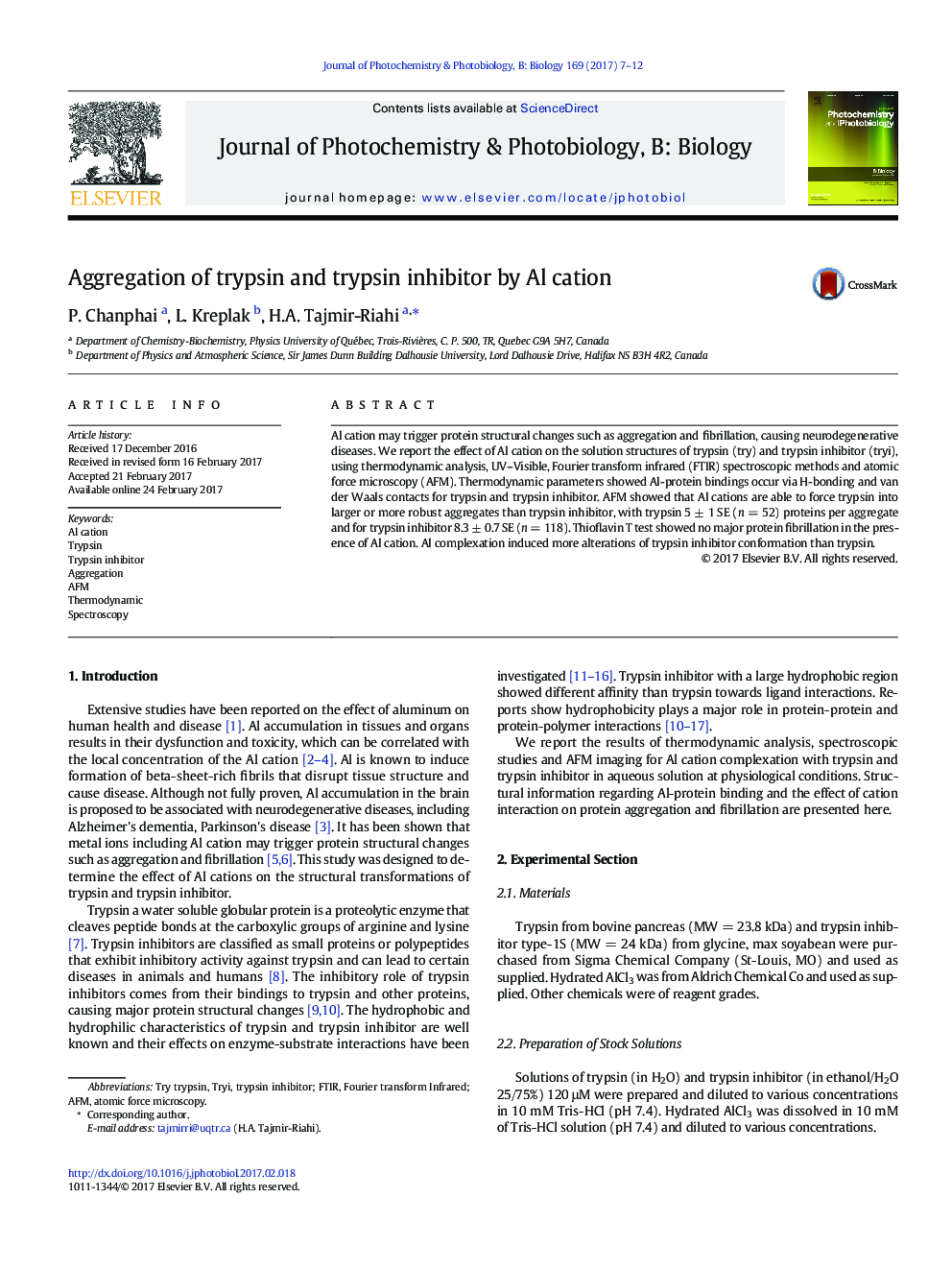| Article ID | Journal | Published Year | Pages | File Type |
|---|---|---|---|---|
| 4754500 | Journal of Photochemistry and Photobiology B: Biology | 2017 | 6 Pages |
â¢The aggregation of trypsin and trypsin inhibitor by Al cations was reported here.â¢Al-protein bindings are via hydrophobic, H-bonding and van der Waals.â¢More hydrophobic trypsin inhibitor forms more stable aggregate than trypsin.â¢Al cations forced trypsin and trypsin inhibitor into large and robust aggregates.â¢Al interaction induced larger perturbations of trypsin inhibitor than trypsin
Al cation may trigger protein structural changes such as aggregation and fibrillation, causing neurodegenerative diseases. We report the effect of Al cation on the solution structures of trypsin (try) and trypsin inhibitor (tryi), using thermodynamic analysis, UV-Visible, Fourier transform infrared (FTIR) spectroscopic methods and atomic force microscopy (AFM). Thermodynamic parameters showed Al-protein bindings occur via H-bonding and van der Waals contacts for trypsin and trypsin inhibitor. AFM showed that Al cations are able to force trypsin into larger or more robust aggregates than trypsin inhibitor, with trypsin 5 ± 1 SE (n = 52) proteins per aggregate and for trypsin inhibitor 8.3 ± 0.7 SE (n = 118). Thioflavin T test showed no major protein fibrillation in the presence of Al cation. Al complexation induced more alterations of trypsin inhibitor conformation than trypsin.
Graphical abstractDownload high-res image (145KB)Download full-size image
